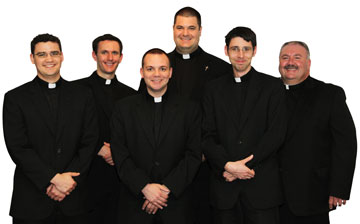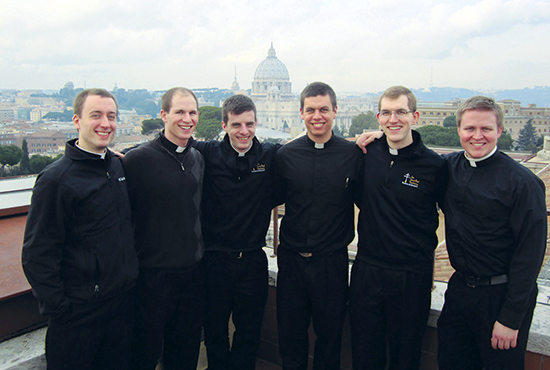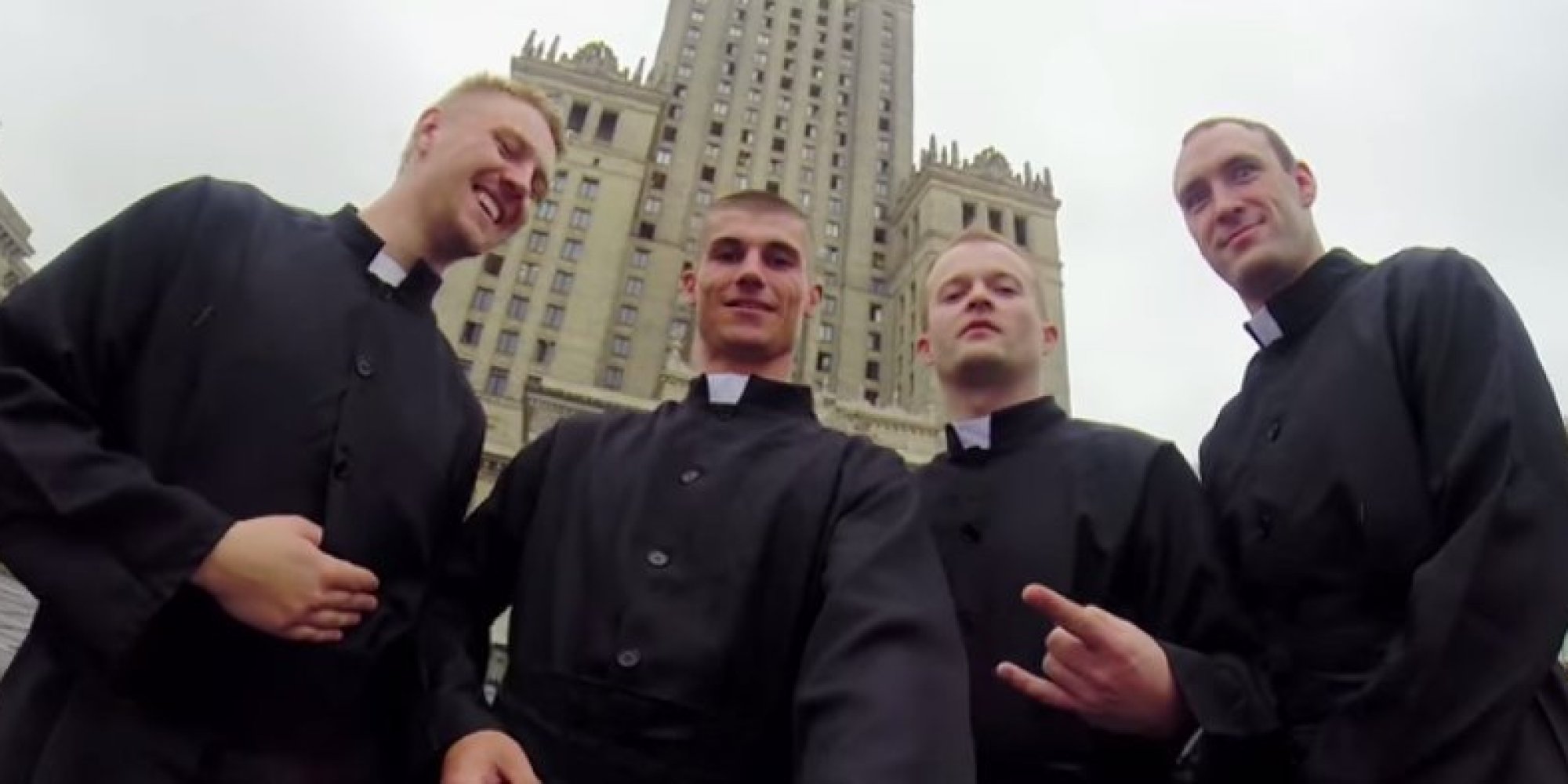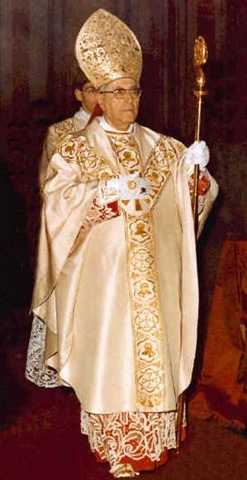A MISSA DO PADRE PIO
Recebi há pouco esta entrevista do Padre Pio e não pude deixar de publicá-la, tamanha a grandeza do que ele viveu nessas missas que se tornaram famosas em todo o mundo.
Padre, o Sr. ama o Sacrifício da Missa?
Sim, porque Ela regenera o mundo.
Que glória dá a Deus a Missa?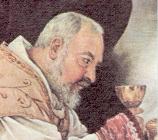

Uma glória infinita.
Que devemos fazer durante a Missa?
Compadecer-nos e amar.
Padre, como devemos assistir à Santa Missa?
Como assistiram a Santíssima Virgem e as piedosas mulheres. Como assistiu S. João Evangelista ao Sacrifício Eucarístico e ao Sacrifício cruento da Cruz.
Padre, que benefícios recebemos ao assistir à Santa Missa?
Não se podem contar. Vê-lo-ás no céu. Quando assistires à Santa Missa, renova a tua fé e medita na Vítima que se imola por ti à Divina Justiça. Não te afastes do altar sem derramar lágrimas de dor e de amor a Jesus, Crucificado por tua salvação. A Virgem Dolorosa te acompanhará e será tua doce inspiração.
Padre, que é sua Missa?
Uma união sagrada com a Paixão de Jesus. Minha responsabilidade é única no mundo. (Dizia-o chorando.)
Que devo descobrir na sua Santa Missa?
Todo o Calvário.
Padre, diga-me tudo o que o senhor sofre durante a Santa Missa.
Sofro tudo o que Jesus sofreu na sua Paixão, embora sem proporção, só enquanto pode fazê-lo uma criatura humana. E isto, apesar de cada uma de minhas faltas e só por sua bondade.
Padre, durante o Sacrifício divino o senhor carrega os nossos pecados?
Não posso deixar de fazê-lo, já que é uma parte do Santo Sacrifício.

O senhor considera a si mesmo um pecador?
Não o sei, mas temo que assim seja.
Eu já vi o senhor tremer ao subir aos degraus do altar. Por quê? Pelo que tem de sofrer?
Não pelo que tenho de sofrer, mas pelo que tenho de oferecer.
Em que momento da Missa o senhor sofre mais?
Na Consagração e na Comunhão.
Padre, esta manhã na Missa, ao ler a história de Esaú, que vendeu os direitos de sua primogenitura, seus olhos se encheram de lágrimas.
Parece-te pouco desprezar o dom de Deus!?
Por que, ao ler o Evangelho, o senhor chorou quando leu estas palavras: “Quem come a minha carne e bebe o meu sangue...”
Chora comigo de ternura!
Padre, por que o senhor chora quase sempre que lê o Evangelho na Missa?
A nós nos parece que não tem importância que um Deus fale às suas criaturas e elas O contradigam e continuamente O ofendam com sua ingratidão e incredulidade.
Sua Missa, Padre, é um sacrifício cruento?
Herege!
Perdão, Padre, quis dizer que na Missa o Sacrifício de Jesus não é cruento, mas a sua participação em toda a Paixão o é. Engano-me?
Não, nisso não te enganas. Creio que tens toda a razão.
Quem lhe limpa o sangue durante a Missa?
Ninguém.
Padre, por que o senhor chora no Ofertório?
Queres saber o segredo? Pois bem: porque é o momento em que a alma se separa das coisas profanas.
Durante sua Missa, Padre, o povo faz um pouco de barulho...
Se estivesses no Calvário, não ouvirias gritos, blasfêmias, ruídos, e ameaças? Havia um alvoroço enorme.
Não o distraem os ruídos?
Em nada.
Padre, por que sofre tanto na Consagração?
Não sejas maldoso... (Não quero que me perguntes isso...)
Padre, diga-me: por que sofre tanto na Consagração?
Porque nesse momento se produz realmente uma nova e admirável destruição e criação.
Padre, por que chora no altar, e que significam as palavras que pronuncia na Elevação? Pergunto por curiosidade, mas também porque quero repeti-las com o senhor.
Os segredos do Rei Supremo não podem revelar-se nem profanar-se. Pergunta-mes por que choro, mas eu não queria derramar essas pobres lagrimazinhas, mas torrentes de lágrimas. Não meditas neste grandioso mistério?
Padre, o senhor sofre, durante a Missa, a amargura do fel?
Sim, muito freqüentemente...
Padre, como pode estar-se de pé no Altar?
Como estava Jesus na Cruz.
No altar, o senhor está pregado na Cruz, como Jesus no Calvário?
E ainda me perguntas?
Como se acha o senhor?
Como Jesus no Calvário.
Padre, os carrascos deitaram a Cruz no chão para pregar os cravos em Jesus?
Evidentemente.
Ao senhor também lhos pregam?
E de que maneira!
Também deitam a Cruz para o senhor?
Sim, mas não devemos ter medo.
Padre, durante a Missa o senhor pronuncia as Sete Palavras que Jesus disse na Cruz?
Sim, indignamente, mas também as pronuncio.
E a quem diz: “Mulher, eis aí teu filho”?
Digo para Ela: “Eis aqui os filhos de Teu Filho”.
O senhor sofre a sede e o abandono de Jesus?
Sim.
Em que momento?
Depois da Consagração.
Até que momento?
Costuma ser até a Comunhão.
O senhor diz que tem vergonha de dizer: “Procurei quem me consolasse e não achei”. Por quê?
Porque nossos sofrimentos de verdadeiros culpados não são nada em comparação com os de Jesus.
Diante de quem sente vergonha?
Diante de Deus e da minha consciência.
Os Anjos do Senhor o reconfortam no Altar em que o senhor se imola?
Pois... não o sinto.
Se não lhe vem o consolo até à alma durante o Santo Sacrifício, e o senhor sofre, como Jesus, o abandono total, nossa presença não serve para nada.
A utilidade é para vós. Por acaso foi inútil a presença da Virgem Dolorosa, de São João e das piedosas mulheres aos pés de Jesus agonizante?
Que é a Sagrada Comunhão?
É toda uma misericórdia interior e exterior, todo um abraço. Pede a Jesus que se deixe sentir sensivelmente.
Quando Jesus vem, visita somente a alma?
O ser inteiro.
Que faz Jesus na Comunhão?
Deleita-se na sua criatura.
Quando se une a Jesus na Santa Comunhão, que quer peçamos a Deus pelo senhor?
Que eu seja outro Jesus, todo Jesus e sempre Jesus.
O senhor sofre também na Comunhão?
É o ponto culminante.
Depois da Comunhão, continuam seus sofrimentos?
Sim, mas não sofrimentos de amor.
A quem se dirigiu o último olhar de Jesus agonizante?
À sua Mãe.
E o senhor para quem olha?
Para meus irmãos de exílio.
O senhor morre na Santa Missa?
Misticamente, na Sagrada Comunhão.
É por excesso de amor ou de dor?
Por ambas as coisas, porém mais por amor.
Se o senhor morre na Comunhão, continua a ficar no Altar? Por quê?
Jesus morto permanecia pendente da Cruz no Calvário.
Padre, o senhor disse que a vítima morre na Comunhão. Colocam o senhor nos braços de Nossa Senhora?
Nos de São Francisco.
Padre, Jesus desprega os braços da Cruz para descansar no Senhor?
Sou eu quem descansa n’Ele!
Quanto ama a Jesus?
Meu desejo é infinito, mas a verdade é que, infelizmente, tenho de dizer nada e me causa pena.
Padre, por que o senhor chora ao pronunciar a última palavra do Evangelho de São João: “E vimos sua glória como do Unigênito Pai, cheio de graça e de verdade”?
Parece-te pouco? Se os Apóstolos, com seus olhos de carne, viram essa glória, como será a que veremos no Filho de Deus, em Jesus, quando se manifestar no céu?
Que união teremos então com Jesus?
A Eucaristia nos dá uma idéia.
A Santíssima Virgem assiste à sua Missa?
Julgas que a Mãe não se interessa por seu Filho?
E os Anjos?
Em multidões.
Padre, quem está mais perto do Altar?
Todo o Paraíso.
O senhor gostaria de celebrar mais de uma Missa por dia?
Se eu pudesse, não quereria descer do Altar.
Disseram-me que traz com o senhor o seu próprio Altar...
Sim, porque se realizam estas palavras do Apóstolo: “Eu trago no meu corpo os estigmas de Jesus”. “Estou cravado com Cristo na Cruz.” “Castigo o meu corpo, e o reduzo à escravidão...”
Nesse caso, não me engano quando digo que estou vendo Jesus Crucificado!
(Nenhuma resposta)
Padre, o senhor se lembra de mim na Santa Missa?
Durante toda a Missa, desde o princípio até o fim, lembro-me de ti.
A Missa do Padre Pio, em seus primeiros anos, durava mais de duas horas. Sempre foi um êxtase de amor e de dor. Seu rosto estava inteiramente concentrado em Deus e cheio de lágrimas. Um dia, ao confessar-me, perguntei-lhe sobre este grande mistério:
Padre, quero fazer-lhe uma pergunta.
Dize-me, filho.
Padre, queria perguntar-lhe que é a Missa?
Por que me perguntas isto?
Para ouvi-la melhor, Padre.
Filho, posso dizer-te que é a minha Missa.
Pois é isso o que quero saber, Padre.
Meu filho, estamos na Cruz, e a Missa é uma contínua agonia.
Tirada de Tradition Catolica, nº 141, nov. 98 citando "Assim Falou o Padre Pio" (S. Giovanni Rotondo, Foggia, Itália, 1974) com o Imprimatur de D. Fanton, Bispo Auxiliar de Vicenza.


